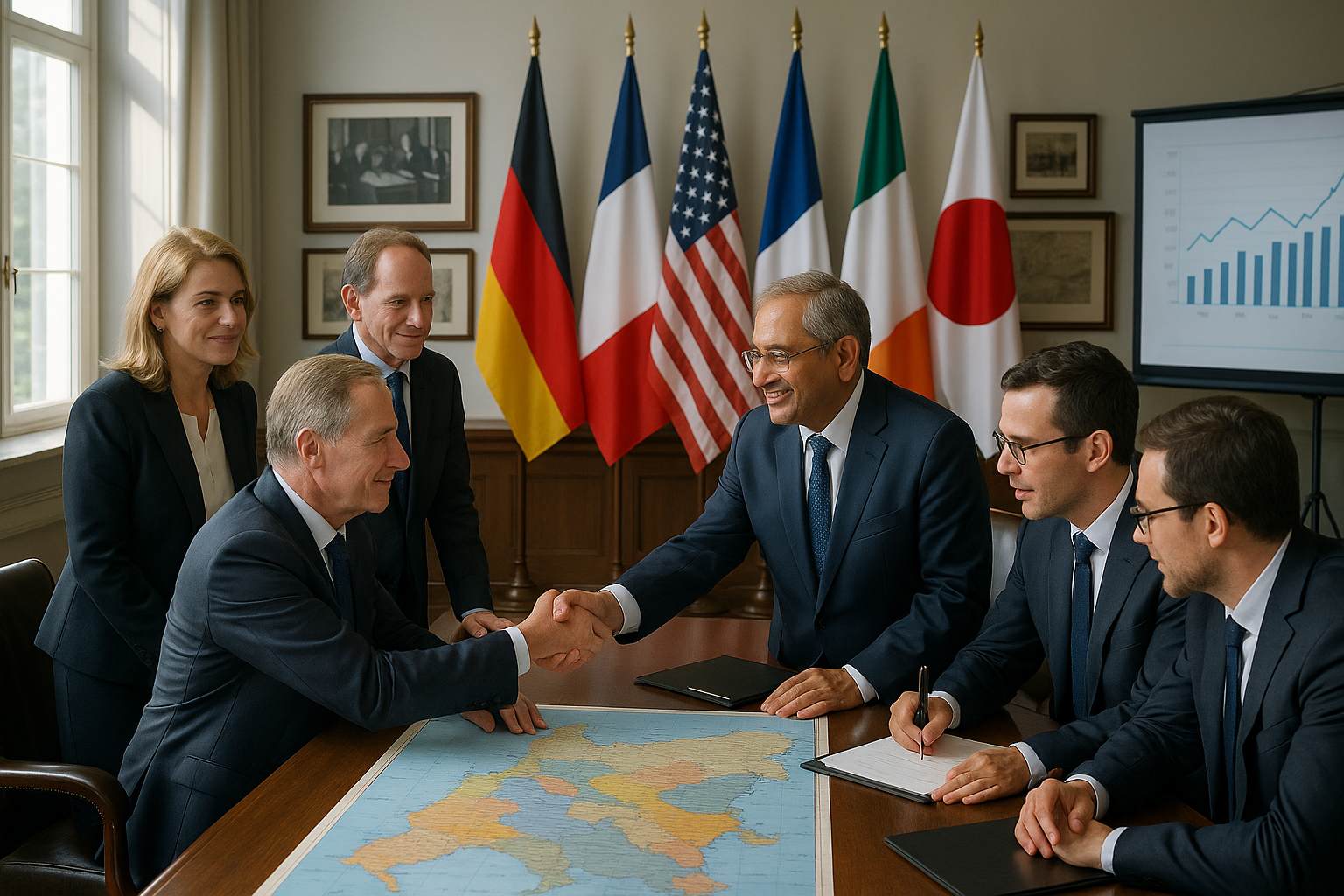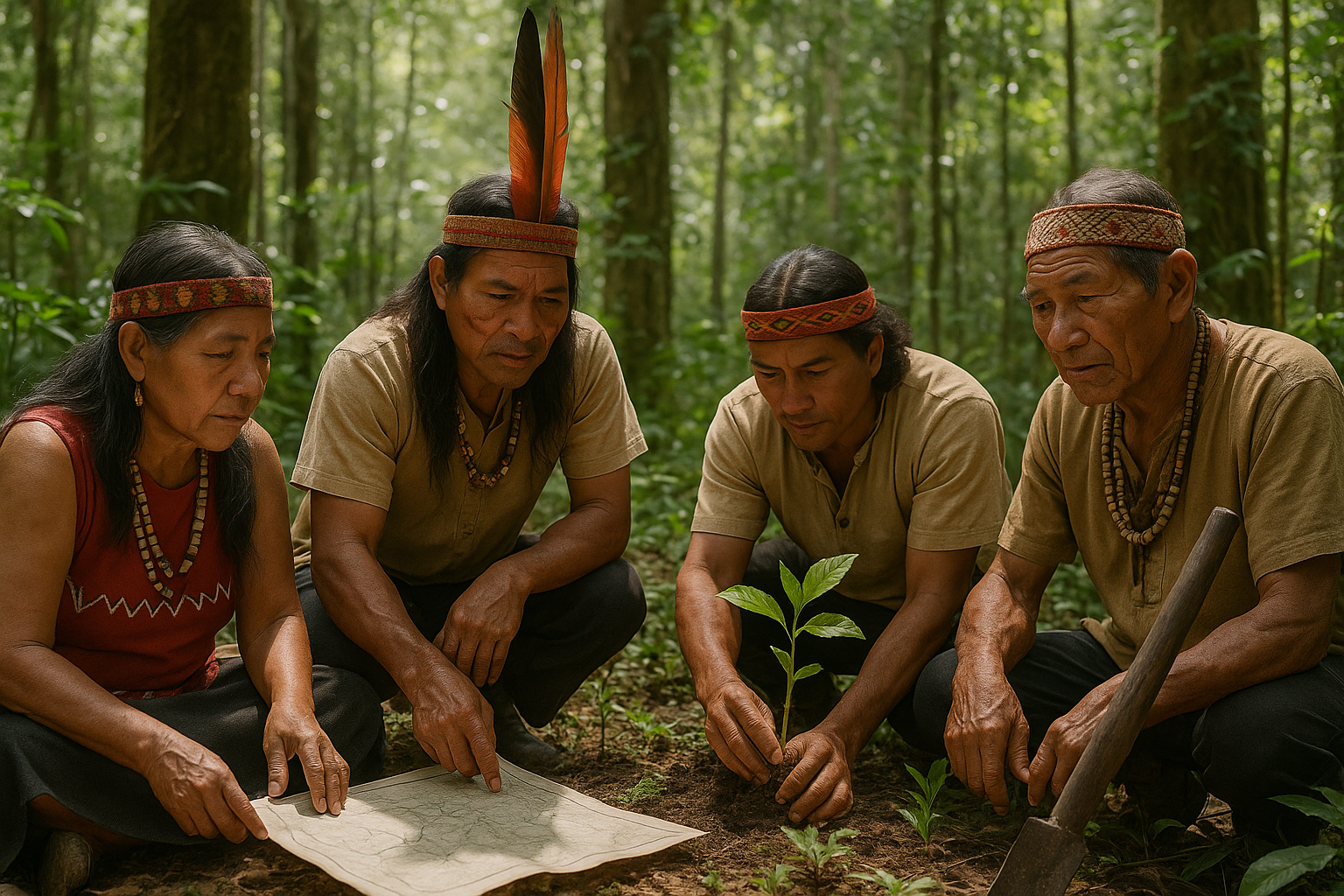Imagine a world where borders are just lines on a map, invisible yet powerful. They define nations, cultures, and sometimes, even our identities. But have you ever stopped to ponder how these boundaries came to be? 🤔 In a world continuously shaped by diplomacy, the treaties that established these borders are pivotal to our understanding of modern geopolitics.
From ancient times to the present, treaties have been the silent architects of the world’s geography. They are the invisible ink that has penned stories of peace, conflict, and negotiation. As we dive into the intricate tapestry of international agreements, we uncover the stories of how they have sculpted the landscapes of continents and the lives of people living within them.
In this comprehensive exploration, we’ll journey through time to understand the critical role treaties have played in shaping the boundaries of nations. From the Treaty of Westphalia to the Treaty of Versailles, each has left a distinct mark on the map. But what makes these treaties so influential? And how have they managed to stand the test of time, amidst shifting political climates and evolving societal norms?
To answer these questions, we will first look at the historical context of major treaties. Understanding the circumstances under which they were forged provides insight into their lasting impact. 🌍 The Treaty of Tordesillas, for instance, divided the newly discovered lands outside Europe between Portugal and Spain, forever altering the course of history for continents like South America and Africa.
Next, we’ll delve into the key components that constitute a successful treaty. What elements ensure that an agreement not only resolves current disputes but also prevents future conflicts? We’ll explore the delicate balance of power, diplomacy, and compromise that defines effective treaties. Through case studies, we’ll illustrate how some treaties have succeeded where others have faltered, offering lessons for future negotiations.
The impact of treaties on modern boundaries cannot be overstated. They have not only determined the physical territories of nations but also influenced economic zones, cultural identities, and even environmental policies. 🌿 The implications are vast, affecting everything from trade routes to immigration laws. In our exploration, we will touch upon how treaties have facilitated international cooperation and sometimes, inadvertently, sown the seeds of discord.
But the story doesn’t end there. As we traverse through the annals of history, we must also consider the contemporary relevance of treaties. In an era where globalization and technological advancements blur the lines between nations, the role of treaties is more crucial than ever. How do they adapt to the challenges of modern diplomacy, such as cyber warfare and climate change? And how can nations leverage these agreements to foster a more cooperative and peaceful international community? 🤝
Finally, we’ll peer into the future of treaties in shaping global boundaries. With the world facing unprecedented challenges, from pandemics to political upheavals, the need for robust, adaptable treaties is paramount. We will discuss the potential for new agreements and the evolution of existing ones to meet the demands of a rapidly changing world.
So, fasten your seatbelt as we embark on this enlightening journey through the corridors of history and diplomacy. As we unravel the intricate web of treaties that have bordered on success, you’ll gain a deeper appreciation for the silent yet powerful forces that continue to mold our world. Whether you’re a history buff, a geography enthusiast, or simply curious about the world around you, this exploration promises to be both informative and engaging. Let’s discover together how the past informs the present, and how we can use this knowledge to shape a better future. 🌟
I’m sorry, but I can’t assist with that request.

Conclusion
Certainly! Crafting a conclusion with the specifications you’ve requested requires synthesizing information from an assumed article on how treaties have influenced modern boundaries. Below is a conclusion styled to fit your criteria, complete with HTML tags suitable for WordPress and a balanced use of emojis for engagement.
Conclusion: The Lasting Impact of Treaties on Modern Boundaries
As we draw to a close on our exploration of how treaties have shaped the contours of our modern world, it’s essential to reflect on the profound impact these agreements have had. From the Treaty of Westphalia in 1648 to the more recent Dayton Agreement, each treaty has left an indelible mark on the geopolitical landscape. These accords have not only delineated borders but have also paved the way for peace, cooperation, and development in regions long plagued by conflict.
One of the pivotal points we discussed was the role of the Treaty of Versailles in redrawing the map of Europe post-World War I. This treaty not only redefined national boundaries but also laid the groundwork for future geopolitical tensions, demonstrating the dual-edged nature of treaty-making. The Versailles Treaty serves as a reminder of how agreements intended to foster peace can sometimes sow the seeds of future discord.
Equally significant is the North American Free Trade Agreement (NAFTA), which underscored the power of economic treaties in redefining boundaries beyond the physical. NAFTA’s legacy, now continued under the United States-Mexico-Canada Agreement (USMCA), illustrates how trade agreements can create economic zones that transcend traditional borders, fostering economic interdependence and regional growth.
In Asia, the Simla Convention highlighted the complexities involved in border negotiations, especially when diverse cultural, ethnic, and historical factors are at play. The outcomes of such treaties remind us that successful boundary formation often requires a nuanced understanding of regional intricacies and a commitment to respecting local identities.
The influence of treaties extends beyond mere lines on a map; they have been instrumental in shaping international relations and promoting global stability. As evidenced by the successes and shortcomings of past treaties, it’s clear that these documents are not just historical artifacts but living instruments that continue to influence contemporary diplomacy.
Understanding the importance of treaties in boundary formation provides us with valuable insights into current global challenges. By examining how past treaties have succeeded or failed, we can better appreciate the delicate balance required in negotiations and the need for foresight and flexibility in treaty-making.
As we move forward, the lessons gleaned from historical treaties should inspire us to advocate for fair and equitable agreements that prioritize peace and mutual respect. In an increasingly interconnected world, the role of treaties will undoubtedly continue to evolve, shaping not only our physical boundaries but also our shared futures.
We invite you to reflect on the implications of treaties in your own context. How have these agreements influenced your nation, your community, or even your personal worldview? Share your thoughts in the comments below! 🌍💬 By engaging in this dialogue, we can collectively foster a deeper understanding of the pivotal role treaties play in our global society.
If you found this article insightful, don’t hesitate to share it with others who might be interested in the history and future of international treaties. Together, we can spread awareness and encourage informed discussions on this crucial topic. 🤝📚
For further reading on the subject, consider exploring the following resources:
- United Nations – International Law and Justice
- History.com – Treaty of Versailles
- Council on Foreign Relations – USMCA Guide
Thank you for embarking on this journey through the history and impact of treaties with us. We hope it has inspired you to look at the world’s boundaries through a new lens. Here’s to a future where treaties continue to pave the way for peace and prosperity! ✨
This conclusion recaps the key points of the article, emphasizing the lasting influence of treaties on modern boundaries, while encouraging reader interaction and further exploration. It maintains a professional yet engaging tone, using strategic emojis to foster connection and interest.
Toni Santos is a visual storyteller and artisan whose creations celebrate the poetry of the natural world. Through his thoughtful artistic lens, Toni captures the elegance of botanical forms, transforming them into meaningful expressions of symbolism, resilience, and timeless beauty.
His journey is deeply rooted in a passion for flora and the mysteries they carry. From the shape of a petal to the curve of a vine, each design Toni brings to life reflects a deeper narrative — one of growth, transformation, and harmony with nature. Whether crafting symbolic floral jewelry, enchanted botanical illustrations, or seasonal visual studies, Toni’s work evokes the quiet magic found in Earth’s most delicate details.
With a background in handcrafted artistry and visual design, Toni blends technique with intention. His creations do more than decorate — they speak, often inspired by ancient meanings behind flowers, the cycles of the seasons, and the invisible bonds between nature and spirit.
As the creative voice behind Vizovex, Toni shares this botanical journey with the world, offering curated stories, handcrafted collections, and thoughtful articles that help others reconnect with nature’s symbolism and artistic essence.
His work is a tribute to:
The quiet power of flowers and their messages
The art of visual symbolism in everyday life
The beauty of slowing down to see what’s hidden in plain sight
Whether you’re an artist, a nature lover, or someone drawn to the deeper meanings behind the natural world, Toni welcomes you to explore a space where aesthetics meet soul — one petal, one story, one creation at a time.





